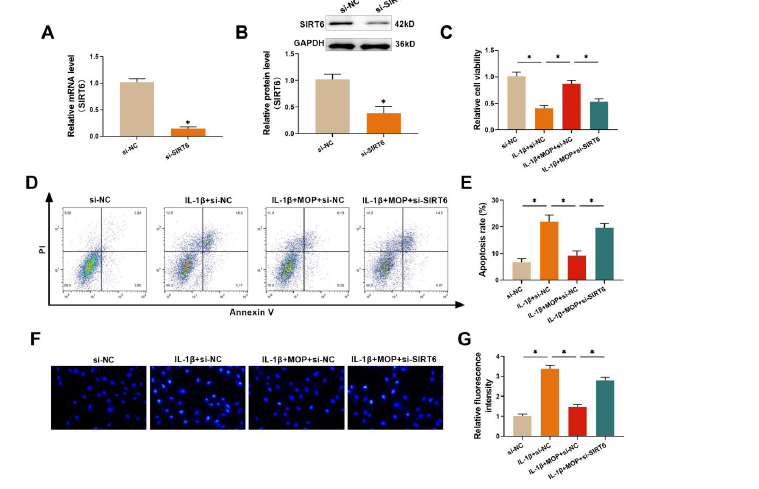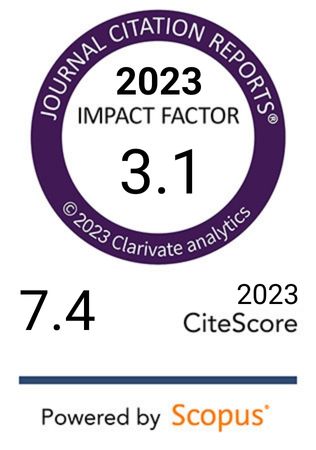Alleviating the IL-1β-stimulated extracellular matrix degradation in osteoarthritis, and chondrocyte inflammation by Morinda officinalis polysaccharide via the SIRT6/NF-κB pathway
DOI:
https://doi.org/10.17305/bb.2024.11437Keywords:
Morinda officinalis polysaccharides, MOP, osteoarthritis, OA, sirtuin 6, SIRT6, NF-κB pathway, extracellular matrix components, ECMAbstract
Morinda officinalis polysaccharide (MOP) is a major active component of Morinda officinalis, known for its roles in supporting bone health and reducing oxidation and inflammation. However, no studies to date have specifically examined the effects of MOP on interleukin-1β (IL-1β)-stimulated chondrocyte inflammation or the progression of osteoarthritis (OA). To investigate, cell counting kit-8 assays were performed to evaluate MOP’s impact on the viability of human chondrocytes (C28/I2 cells). Cell damage was assessed using flow cytometry and Hoechst 33258 fluorescent staining. Inflammatory factor levels were measured via western blot and ELISA, while extracellular matrix (ECM) degradation was analyzed through immunofluorescence. The involvement of the NF-κB pathway and its regulation by Sirtuin 6 (SIRT6) were also explored using western blot. Following IL-1β treatment, C28/I2 cell viability decreased, inflammatory factor secretion increased, and ECM degradation was observed. MOP counteracted these effects by mitigating IL-1β-induced cell damage, preventing ECM degradation, and reducing inflammatory factor secretion, in a dose-dependent manner. Furthermore, IL-1β treatment suppressed SIRT6 expression, whereas MOP upregulated it. Notably, silencing SIRT6 diminished MOP’s protective effects on C28/I2 cells and reversed MOP’s suppression of the NF-κB pathway. In conclusion, MOP alleviates IL-1β-induced C28/I2 cell injury by inhibiting the NF-κB pathway through activation of SIRT6. This, in turn, reduces the inflammatory response, prevents ECM degradation, and ultimately slows OA progression.
Citations
Downloads

Downloads
Published
Issue
Section
Categories
License
Copyright (c) 2025 Dongfang Zhao, Shuqin Xing, Jiao Qi, Zhiqiang Wei, Jianghai Huang, Jigao Sun, Xinzhu Wen, Yafei Wang

This work is licensed under a Creative Commons Attribution 4.0 International License.









